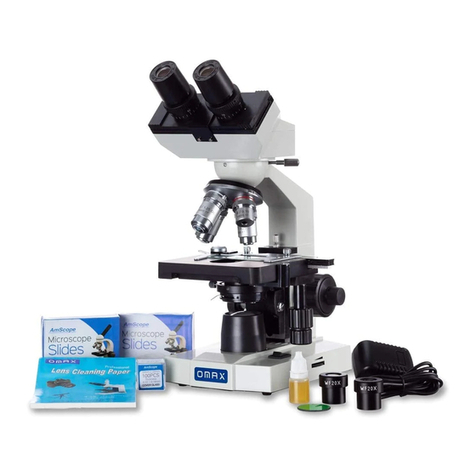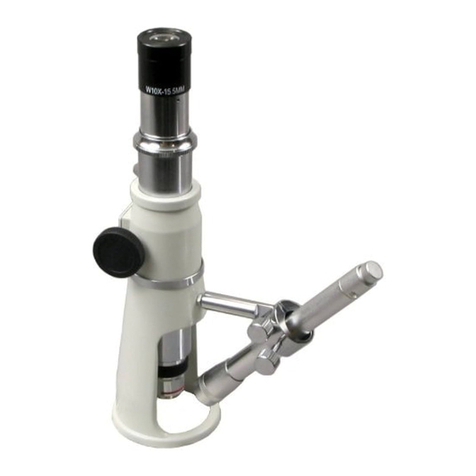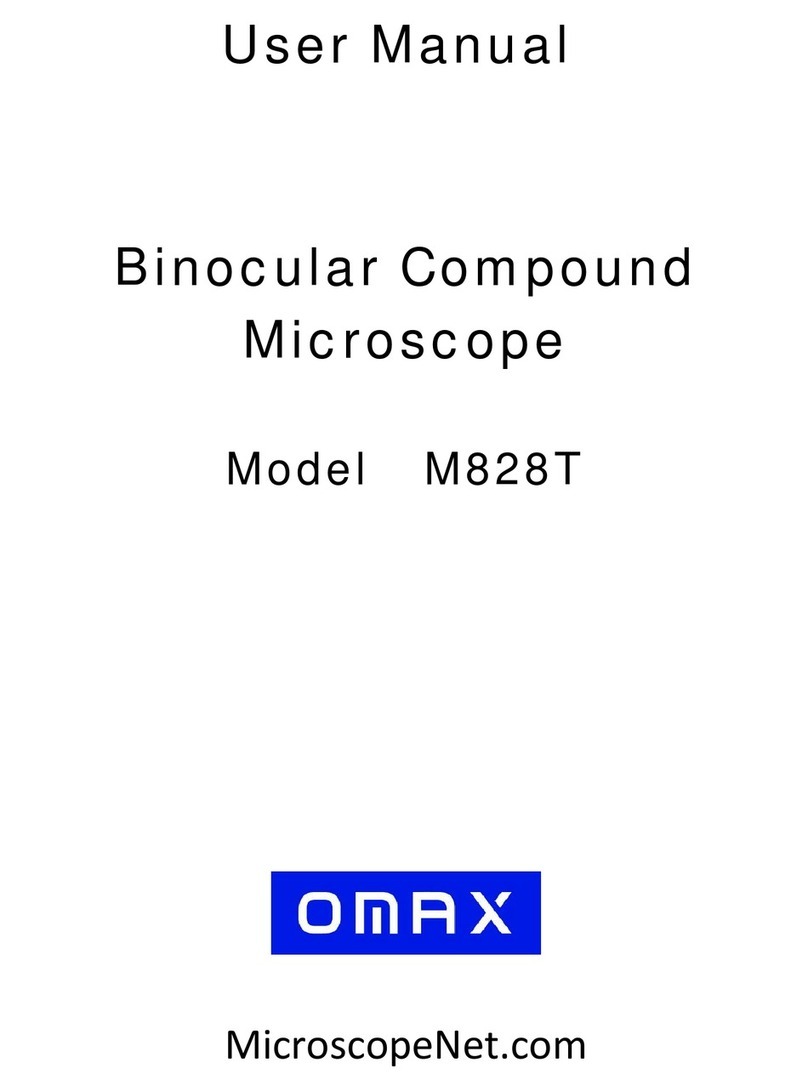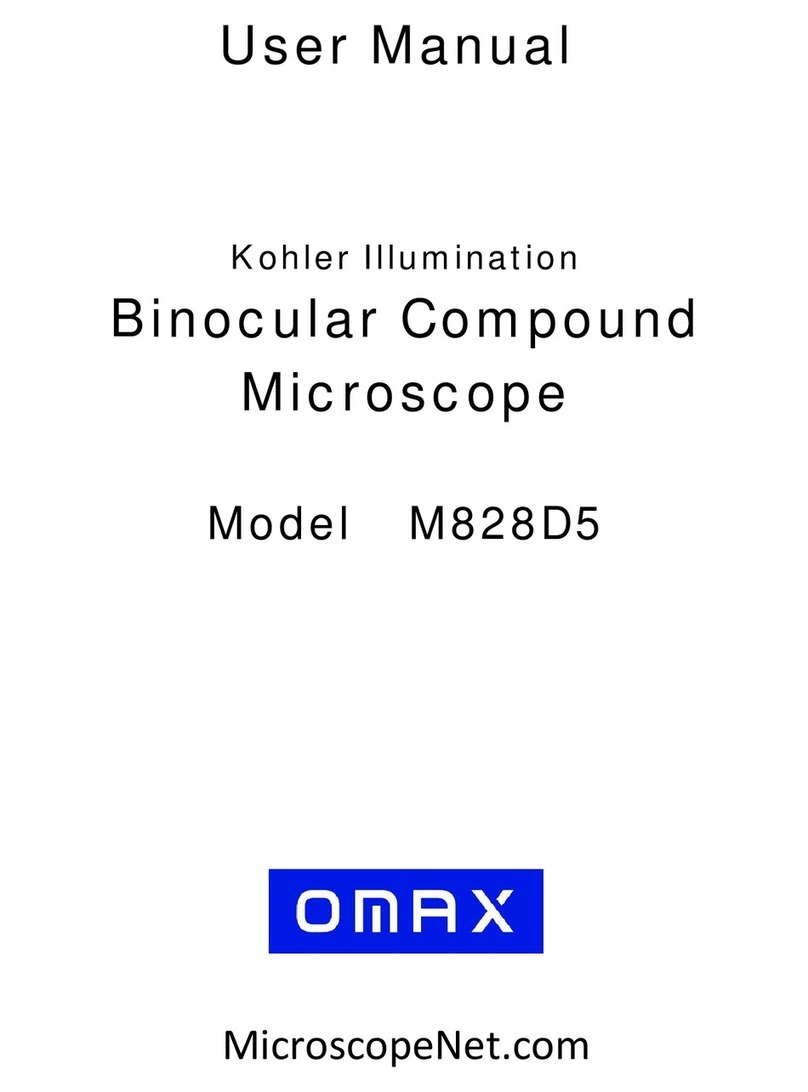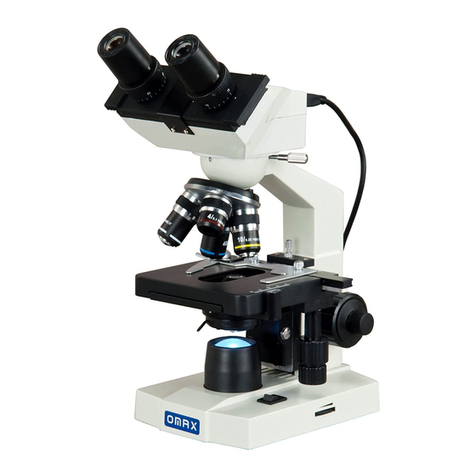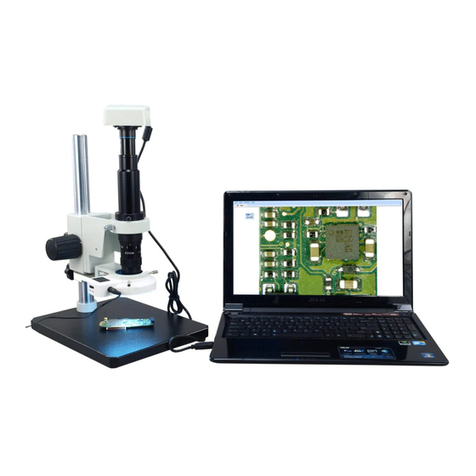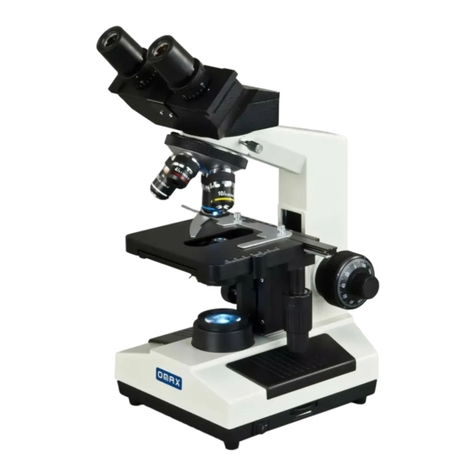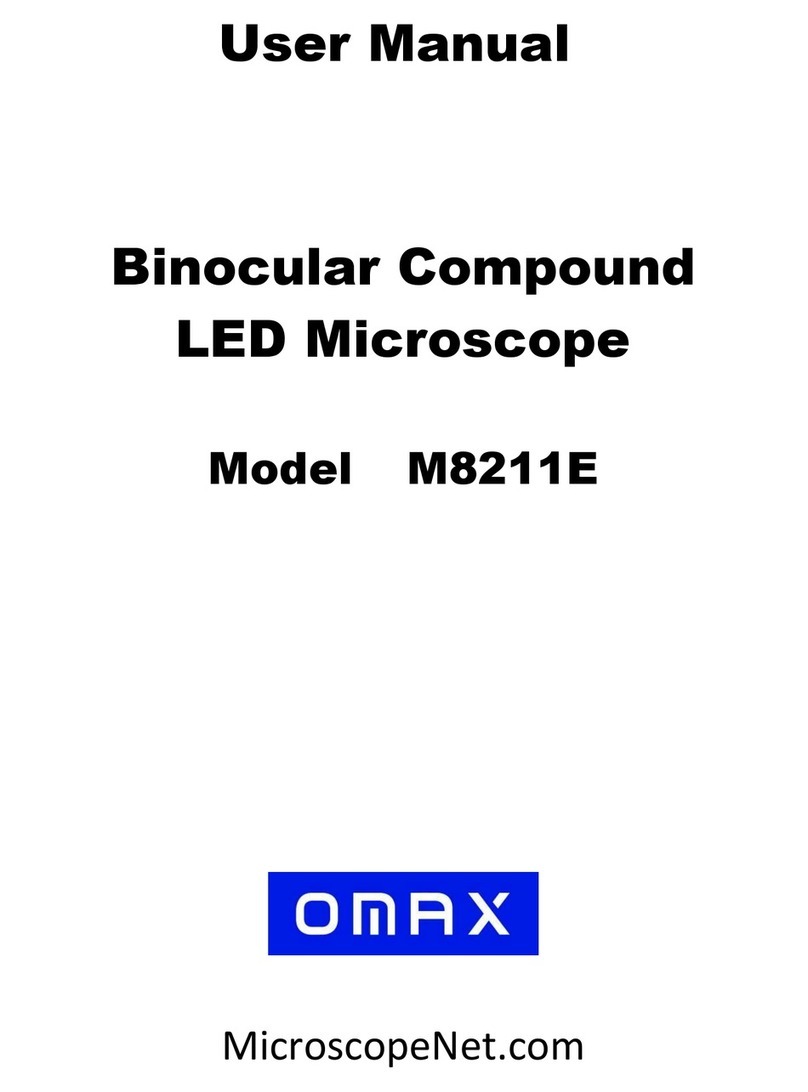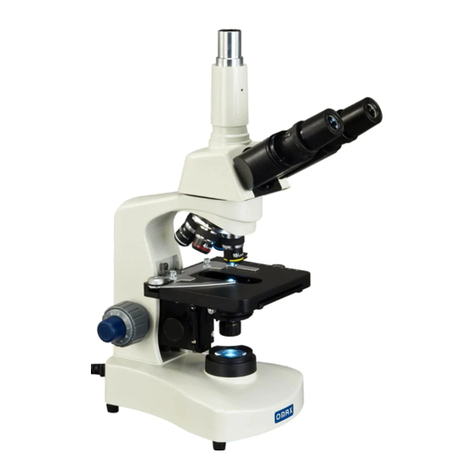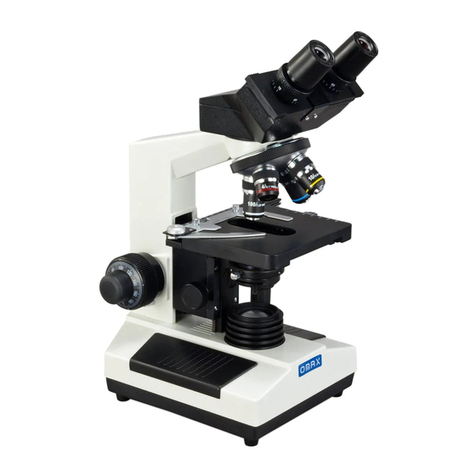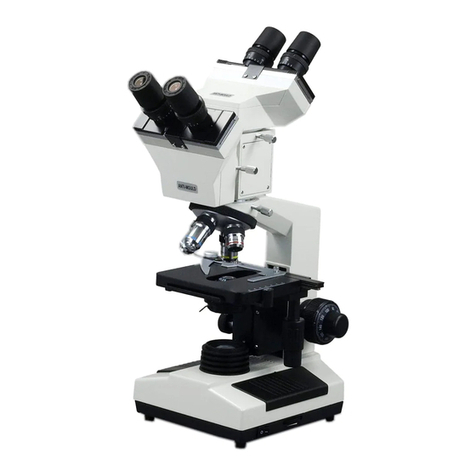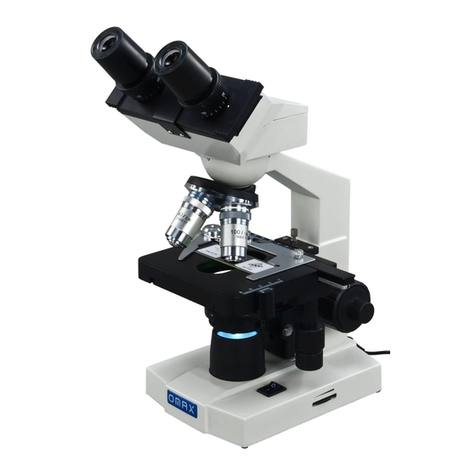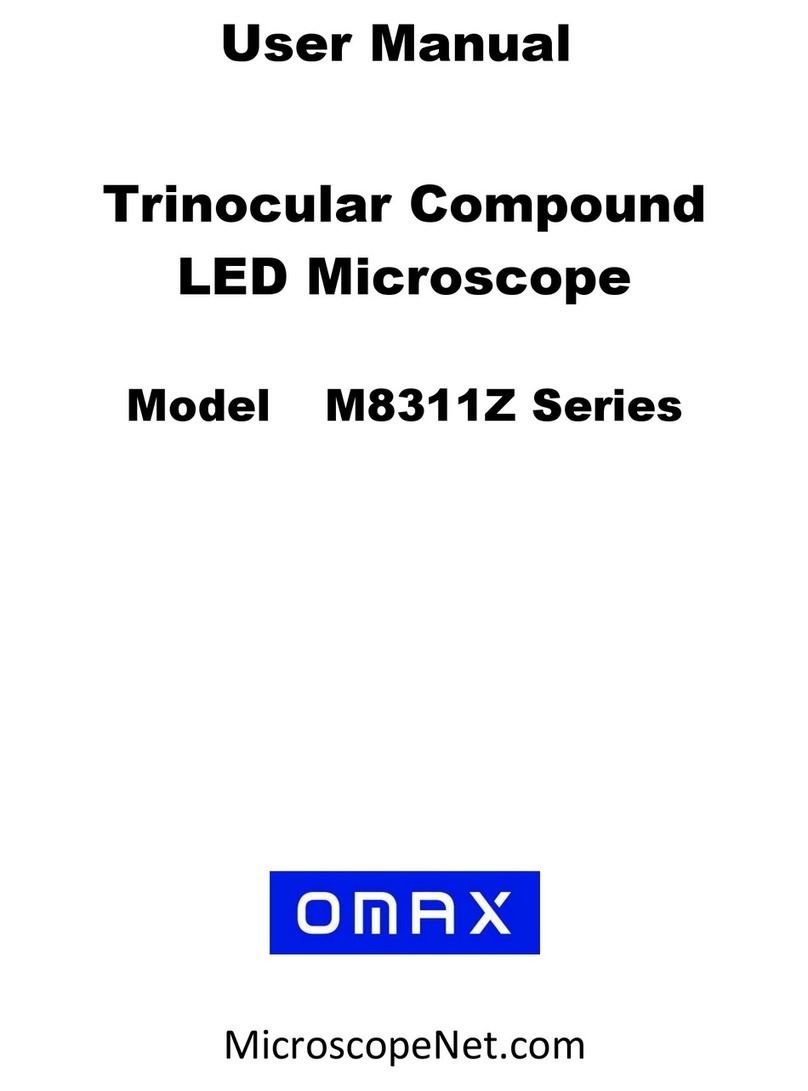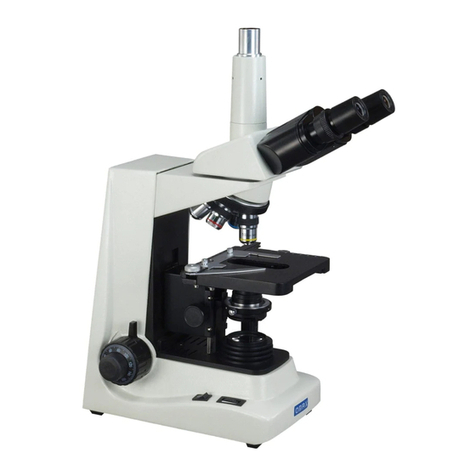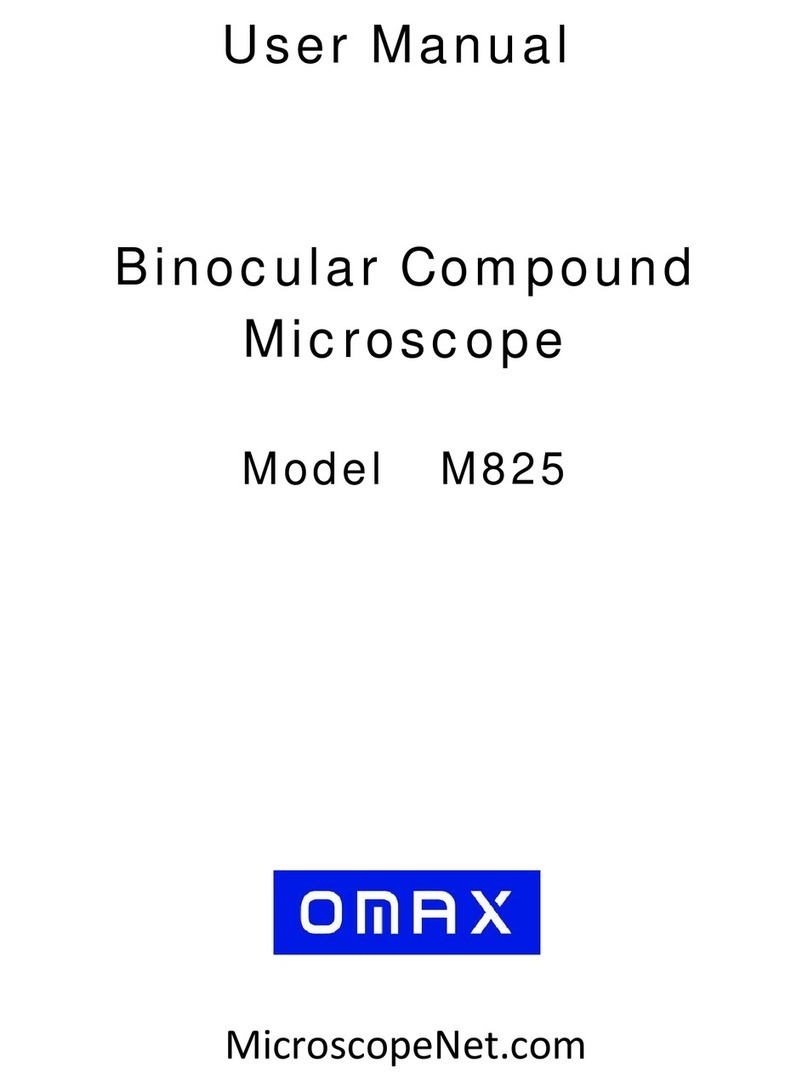
www.microscopenet.com
3.4 Adjusting eyepiece diopter
1) Rotate the 10X objective into position.
2) Rotate the diopter rings on the eyepiece tubes
until its numerical value is the same as your
interpupillary distance, for example, 70 in the
figure (See Fig. 6).
3) Close your left eye and bring the specimen
into focus following the focusing procedures in
3.5.
4) Close your right eye and bring the same
specimen into clear sharp focus by adjusting
the diopter ring on left eyepiece tube only. Do
not use focus knobs at this step.
5) Since both sides are adjustable, you may also
do the above in the opposite way, in other
words, left eye first and right eye second.
3.5 Focusing
1) With the 10X objective in position, raise the mechanical stage using the coarse
focus knob until the specimen is close to the objective.
2) Turn the coarse focus knob until the specimen is in focus.
3) Use the fine focus knob to obtain a sharp image.
4) To get a good focused image, you may need to combine the focus knob adjustment
and interpupillary distance adjustment, along with eyepiece diopter adjustment
stated in 3.3and 3.4.
5) You may now switch to another magnification objective.
Tips:
To prevent your specimen slide from making contact
with an objective, raise the stage to its highest position
without contacting the 100X objective, then tighten the
focus stop lever (Fig. 7). Give the stage a tiny extra
moving space to ensure the objective can be focused
every time.
3.6 Applying the immersion oil
1) Rotate the objective nosepiece to seat the observing position between the 40X and
100X objectives as shown in Fig. 8 (a).
2) Place a drop of immersion oil on the slide cover as shown in Fig. 8 (b).
3) Rotate the objective nosepiece to seat the 100X objective to the observing position
until you hear a “click” sound.
4) After observing the specimen, use the camera cleaning kit to clean the 100X
objective lens gently and the specimen in time.
5) If it is hard to clean, you need a little bit alcohol to clean the 100X objective lens and
the specimen.
